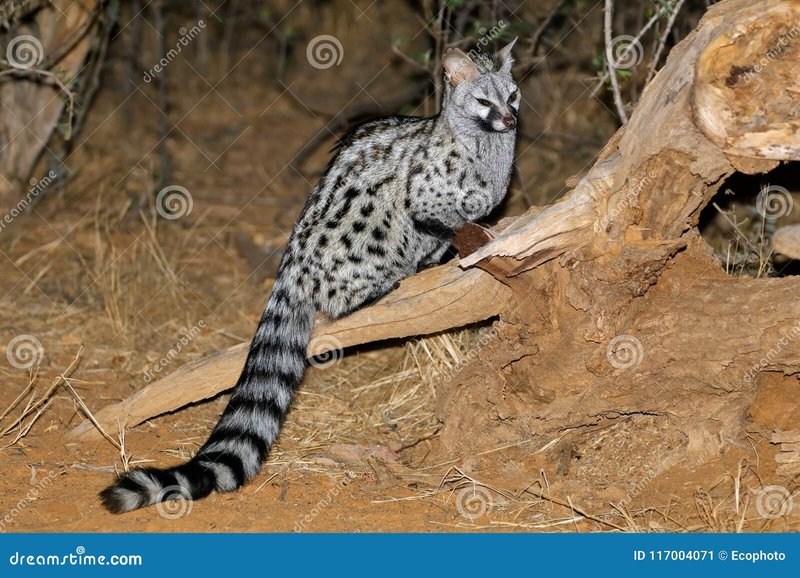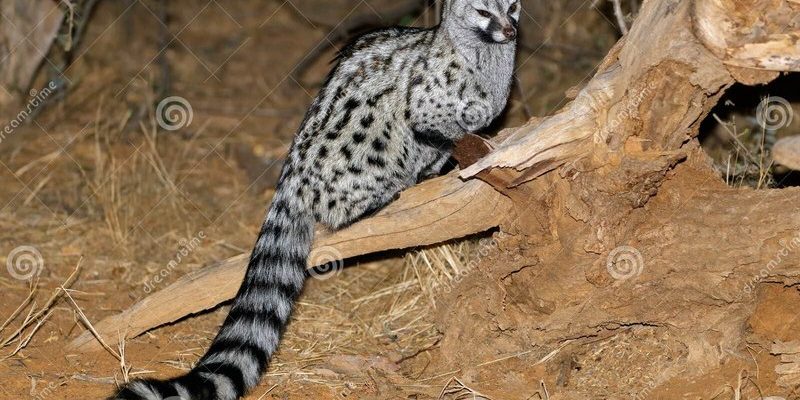
Let’s take a closer look at how genets fit into the larger picture. This often-overlooked species plays a multifaceted role in their environments, from helping control pest populations to facilitating seed dispersal. Think of them as nature’s little multitaskers! So, grab your coffee, and let’s dive deeper into the fascinating world of genets and discover their ecological importance.
What is a Genet?
Genets belong to the family Viverridae and are part of the same family as civets and linsangs. They typically have long bodies, spotted fur, and a long tail. Genets are known for their agility, which is similar to that of cats. They are mostly nocturnal, which means they come alive when the sun goes down, making them fascinating creatures to observe in the wild.
There are several species of genets, but the most common is the common genet (*Genetta genetta*). You might find them in a variety of habitats, including forests, savannas, and even urban areas. Their adaptability is one of the reasons they thrive in different environments. They primarily feed on small mammals, birds, insects, and fruits, showing just how versatile their diet can be.
When you think about their physical traits, you might notice how their sleek bodies and sharp reflexes allow them to climb trees and navigate their surroundings easily. This adaptability not only aids in their survival but also enhances their role in the ecosystem.
Genets as Predators
One of the most significant roles genets play in their ecosystems is that of a predator. They help regulate populations of small mammals and insects, contributing to a balanced food web. If you’re familiar with the concept of a food chain, genets sit comfortably just above their prey, ensuring that certain species don’t overpopulate and disrupt the ecosystem balance.
Here’s the thing: when prey populations grow too large, they can lead to overgrazing or depletion of resources. This is where genets step in, maintaining the balance by keeping these populations in check. For example, a single genet can consume a variety of small animals and insects during the night, effectively managing the local biodiversity.
Their hunting behavior also helps control pest populations that can affect agriculture. Farmers living near genet habitats might find that these little predators help reduce the number of rodents and insects that can damage crops. So, in a way, having genets around can be beneficial not only for the environment but also for human livelihoods.
Seed Dispersal and Plant Health
Genets are not just about keeping the population of small animals in check; they play a vital role in plant health, too. Many genets have a diet that includes fruits, which they consume and then excrete. This seemingly simple act has far-reaching consequences for the ecosystem.
When a genet eats a fruit, it often passes the seeds in its droppings far from the parent plant. This process contributes to seed dispersal, allowing plants to spread and grow in new areas. Without animals like genets to facilitate this process, some plant species might struggle to reproduce or expand their ranges.
Let me explain it this way: think of genets as little gardeners of the forest. They help plants colonize new ground, which can lead to increased plant diversity and healthier ecosystems. Healthy plant life supports various other species, creating a thriving habitat for many creatures.
Genets and Their Role in Biodiversity
Biodiversity is crucial for resilient ecosystems, and genets contribute to this diversity in several ways. By being both predators and seed dispersers, they connect various species through food webs and plant interactions. This dynamic role allows genets to contribute to both animal and plant diversity.
You might be wondering why biodiversity matters. A rich variety of species ensures that ecosystems can withstand environmental changes or disturbances. For instance, if a disease affects one species, others may thrive and help balance the ecosystem. Genets, by maintaining their prey population and aiding plant reproduction, support this diversity.
In areas with fewer genets, researchers often find imbalances in ecosystems. Increased rodent populations and reduced plant diversity can be common issues. Therefore, protecting genets and their habitats is essential for maintaining healthy ecosystems.
Genets and Human Interaction
While genets are essential to their ecosystems, their relationship with humans can be complicated. In some regions, they are seen as pests, especially when they invade farms or urban areas. Their nocturnal nature might have them scavenging for food in garbage cans, leading to mixed feelings among people.
However, it’s important to recognize their benefits. Instead of viewing them solely as nuisances, we could embrace their role in controlling pest populations and promoting biodiversity. Creating awareness about the ecological significance of genets can help foster a more positive relationship between humans and these creatures.
You might be curious about how humans can support genets. One way is by protecting their habitats and advocating for conservation efforts. By keeping natural spaces healthy and intact, we can ensure that genets continue to thrive and contribute to the ecosystems they inhabit.
Conservation Status and Future Challenges
The conservation status of genets varies by species, with some facing threats from habitat loss and hunting. Urbanization and agricultural expansion often encroach on their natural habitats, putting their populations at risk. Additionally, as climate change affects ecosystems, genets may struggle to adapt or find suitable habitats.
To help protect these fascinating creatures, conservation efforts are crucial. Supporting wildlife reserves and habitats where genets live can make a difference. Local communities can also benefit from programs that promote coexistence and educate people about the value of these animals in their ecosystems.
Honestly, the future of genets is intertwined with our own actions. By making conscious choices about land use and promoting wildlife-friendly practices, we can help ensure that genets continue to play their vital roles in their ecosystems.
In conclusion, genets might be small and often overlooked, but their role in the ecosystem is monumental. From controlling pest populations to facilitating seed dispersal, they contribute to the health and balance of their environment. As we learn more about these intriguing creatures, it becomes clear that protecting them is essential for the biodiversity and resilience of our ecosystems.
So, the next time you hear about genets, remember they are more than just cute, cat-like mammals. They’re nature’s multitaskers, quietly working behind the scenes to keep our world in balance. Together, let’s appreciate and advocate for these incredible animals and the critical roles they play in their ecosystems.

